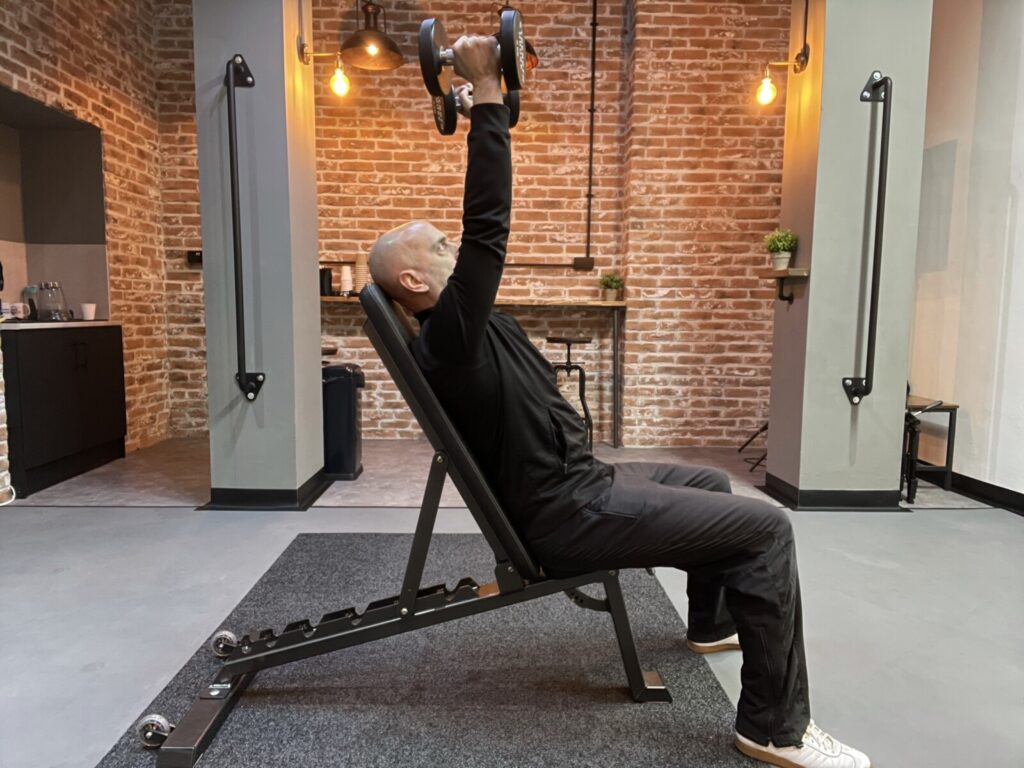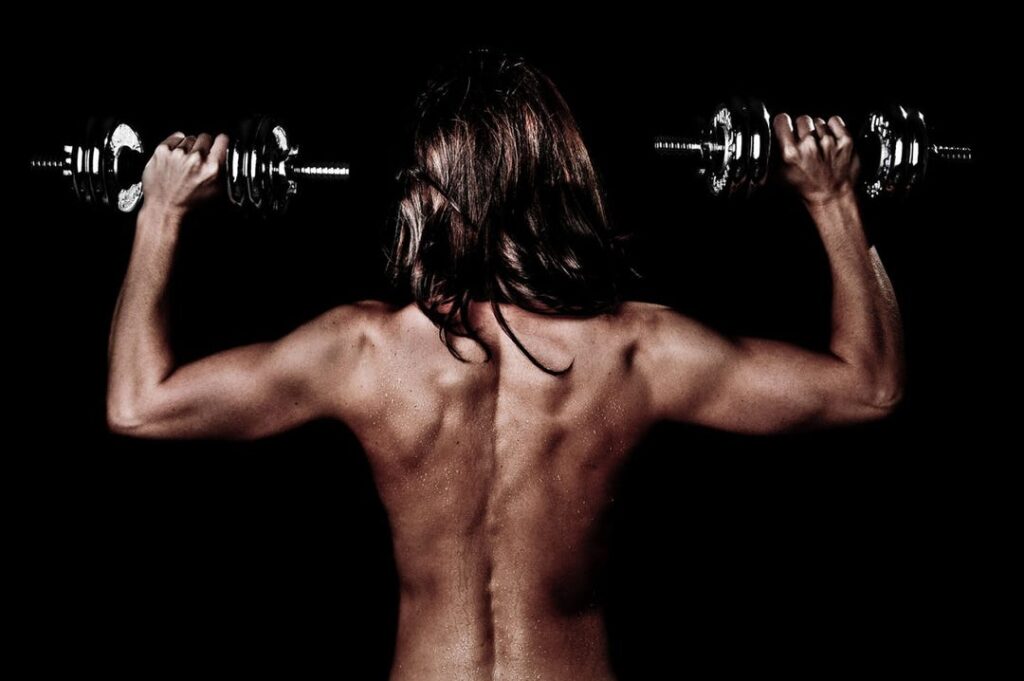In this post we look at how to shoulder press without getting pain in your shoulder.

When was the last time you spent some time with your arms over your head?
Perhaps when you were wrestling with a suitcase in the overhead compartment on a flight?
Or trying to fix a light fitting at home?
What you’ll notice is that unless you train this range of motion on a regular basis, it’s exhausting work. Your shoulders quickly become a fiery ball of wrongness.
You might also notice that performing overhead work may cause you pain and discomfort. Which is perhaps why you don’t train this range of motion in the first place.
A bit of a vicious cycle will ensue as the less time you spend in these positions, the weaker they will become.
So how can you improve your ability to perform overhead work without making your shoulders feel worse?
By adapting the shoulder press exercise.
The shoulder press

Before we go through this exercise, it’s worth noting that overhead work is something I usually look at after I’ve checked through a number of other shoulder motions.
This is because a fair few muscles have to do their job reasonably well to help you achieve this motion without issues.
This post will start at ground zero for shoulder work and subsequent posts will take you through the process I generally use.
That said I promised you some workarounds for pain and discomfort in the shoulder press so here we go.
The large range of motion available at the shoulder joint enables you to move your arms over your head in a variety of ways.
You can press them up with your elbows relatively close together, or with them wide apart, plus every position in between.
A typical dumbbell shoulder press will be demonstrated with elbows as far apart as they will go.
This places your shoulder in what for many people will be maximal abduction (elbows out to the side) and external rotation.

This position also winds many of the ligaments of the shoulder into a position of maximal tension.
A position that will place your nervous system on high alert.
It’s a bit like driving down the motorway a foot away from the car in front. It might be fine but a small mistake will quickly cause problems. It’s much better to leave yourself some wiggle room and move away from the bumper.
For this reason I suggest you start with your elbows shoulder width apart and experiment with pressing your arms overhead. Then move your elbows a little wider and try again.
Keep moving your starting point wider until you find a comfortable arc to move through that doesn’t cause you pain or discomfort.
How to make the shoulder press more challenging
Providing you’ve found a pain free arc of motion to move through and you’re able to easily perform 10 or more repetitions without too much effort, you can add resistance.
To begin with this is best done using either dumbbells or a cable machine. Both pieces of equipment will allow you to load the arc of motion you have chosen.
At this stage I also recommend using a weight bench to support your torso if you have access to one. This will enable you to choose the angle you’d like your trunk to be set at.
Some people find the vertical trunk position you must adopt without a bench causes shoulder discomfort at the top of the movement.
If you find this to be the case, experiment with moving the back rest away from the vertical position until you can comfortably raise both arms over your head.
If you don’t have access to a bench, you can use sofa cushions or something similar to support your trunk away from the upright position.
Dumbbell shoulder press considerations
If you choose to use dumbbells for additional resistance you now have a couple of other things to consider.
Crucially the weight of the dumbbell should stay over your elbow joint. If it falls inside of it (towards your chest) the external rotators of your shoulder must now work harder to prevent it falling further.
Likewise if you allow the dumbbell to either straighten or bend your elbow, your biceps or triceps will have to work to prevent further motion in either direction.
Both these scenarios will lead to additional work that is unnecessary and distracting.
Make sure the dumbbell remains over your elbow joint throughout to avoid this.
Cable machine shoulder press considerations
A cable machine gives you the option of removing the elbow joint from the exercise entirely.
By attaching the cable to some cuffs placed above your elbow you can focus on the shoulder flexion component entirely.
This can also be done with bands if you don’t have access to a cable machine.
Summary
Overhead work is often neglected, usually because people find it can cause as many problems as it solves.
By customising a shoulder press to suit your particular strengths, weaknesses and anatomical idiosyncrasies, you can normally find a way to train this motion without causing further issues.